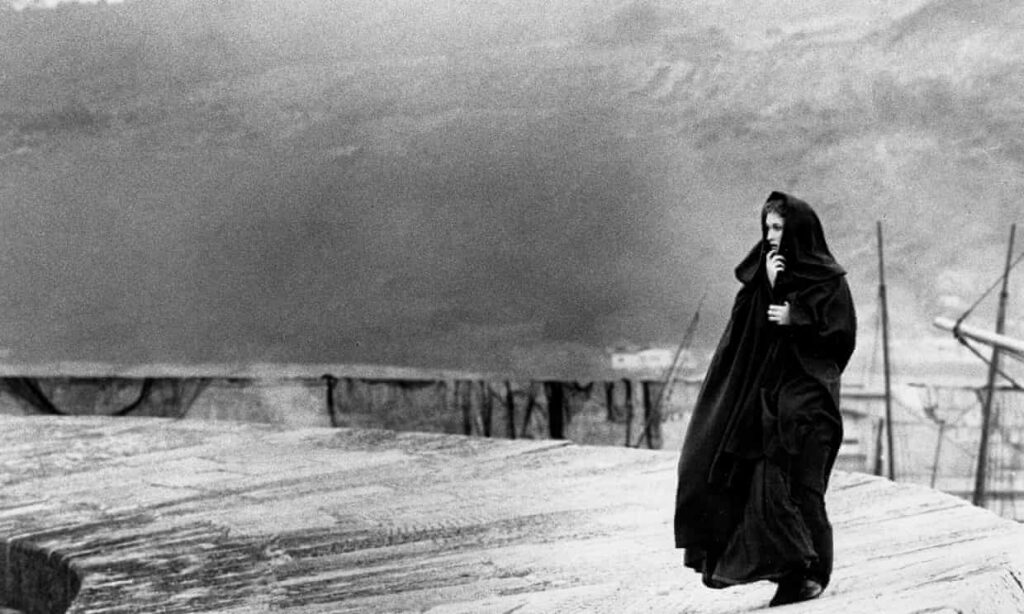
John Fowles’s idea for his now classic novel began with a single image: ‘A woman stands at the end of a deserted quay and stares out to sea’. At the time, Fowles was staying in Lyme Regis (the south west of England). From the bottom of his garden he could see the famous Cobb (old stone wall), jutting out into the waves.
The mysterious Victorian woman with her back to the viewer reminds me of the paintings of Hammershoi:

What is she thinking?
But whereas Hammershoi’s figure is always stood in an ordered interior, the mysterious Sarah Woodruff in ‘The French Lieutenant’s Woman’ is first seen standing on the stormy old stone pier, perilously close to the sea.
In the brilliant film adaptation, Charles and Sarah’s first meeting is filmed on location, with a real sense of danger. And it is this sense of mystery and danger – of transgression, that pervades the film. In the hands of the playwright and Nobel prize winner Harold Pinter the adaptation keeps all of its postmodern cleverness while never losing its passionate heart.


